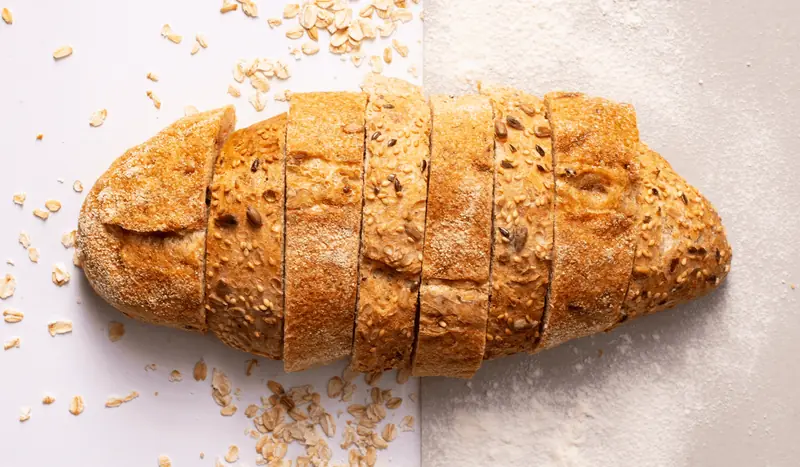
The healthy eating movement is bringing humanity back to natural foods and eco-friendly products that were forgotten during the era of convenience foods and fast food.
What Are Bran?
Bran is the leftover grain byproduct from flour milling. The main raw material for flour is the starchy endosperm, while the outer part is discarded. This distribution reveals a significant waste, as the most valuable part of the whole grain is thrown away: 90% of its biologically active components end up in the waste.
Despite their low nutritional value, bran is rich in beneficial substances: fiber, fatty acids, vitamins, and trace elements. In fact, the byproduct contains more valuable components than the primary product! We’re talking about the hard shell of the grain, not the soft coverings, husks, or leftover fragments from cereal and legume crops.
So why, despite their clear nutritional value, have bran remained largely unappreciated and fed to livestock until recently? The reason is that in their natural state, they are not edible, and making them tasty requires skill. If you overload bread with bran, it can decrease its digestibility, while a small addition can enhance flavor and stimulate intestinal peristalsis.
Today, food manufacturers have the necessary technologies and recipes for incorporating bran. They are added to bread and muffins, desserts and cookies, yogurts, and cereals. Various types of grains and cereals are also processed into ready-to-eat wheat, rye, oat, rice, buckwheat, and other granules that can be consumed as snacks or used in healthy meal preparations.
The advantage of oat bran lies in its rich content of vitamins, plant fats, and protein, making it a staple in low-carb diets. Rice bran is valued for its ability to prevent the absorption of toxins into the bloodstream while simultaneously soothing a sensitive stomach and improving intestinal function. Rye and wheat bran are effective at quickly curbing hunger. Flaxseed bran, in addition to culinary uses, is suitable for poultices, while mustard bran can be used for mustard plasters.
Oat Bran for Vitamin Deficiency
Spring is the season of vitamin deficiency, which manifests as reduced immunity, fatigue, impaired cognitive function, hair loss, brittle nails, and more. In such cases, oat bran can be the most effective remedy for vitamin deficiency, acting as an energizer by saturating the body with B vitamins, provitamin A, and vitamins C, E, D, K, PP, and H.
To boost your energy, boil a cup of oat bran in a liter of water until it reaches a liquid porridge consistency. Strain the broth and add the same amount of boiled milk. Cool it down and stir in 4 tablespoons of honey. Take a third of a cup of this natural energy drink three times a day.
Another option is a revitalizing infusion: pour three cups of boiled water over a cup of oat bran and let it steep for a day at room temperature. Drain the excess water and store the thick mixture in the refrigerator, warming it up before consumption. Drink or eat a quarter cup three times a day before meals.
Oat Bran: Benefits and Risks
By alleviating the symptoms of vitamin deficiency, this beneficial product regulates metabolic processes, as it is rich in fiber, zinc, magnesium, copper, and potassium. It can quickly satisfy the need for dietary fiber, even with a poorly planned diet. Oat and rye bran are the best choices for this purpose, as they are leaders in insoluble fiber content, with up to 80% fiber. This product is more beneficial than fiber itself, as it contains important trace elements from the grain germ.
Oat bran is also a champion in terms of valuable organic compounds like lycopene and lutein. These micronutrients promote the health of the eyes, skin, hair, nails, musculoskeletal system, and nervous system. By lowering cholesterol levels, fiber reduces the risk of hypertension and supports heart function. It is beneficial to consume bran for diabetes, as it lowers blood glucose levels. Maintaining optimal sugar and insulin levels occurs due to slow absorption, which prevents sharp spikes in blood sugar after meals.
In cases of slowed motility in the gallbladder (hypodyskinesia), this product can help normalize bile secretion. Thanks to its choleretic properties, it positively affects the liver and gallbladder. Oat bran also has a favorable impact on the pancreas and gastrointestinal tract.
However, erosive gastrointestinal diseases in an acute stage, diarrhea, abdominal adhesions, and individual intolerance are contraindications for consuming this product in any form. Gastritis, colitis, stomach ulcers, and duodenal ulcers are reasons to avoid bran in the diet, as they can trigger bloating and irritate the inflamed walls of the intestines.
What Are the Benefits and Risks of Wheat Bran?
In addition to being a rich source of vitamins A, E, and the entire B group, wheat bran is a leader in fiber content: 100 grams contain three times the daily norm (about 80 grams). Wheat bran regenerates tissues and rejuvenates the body, keeping the muscular, digestive, cardiovascular, and nervous systems in good shape. This beneficial product is packed with zinc, manganese, iron, and iodine.
The nutritional value of wheat bran is determined by the amount of floury particles: the more there are, the higher the caloric content. On average, wheat bran consists of 15.5% protein, 8.4% fiber, 5% ash, 3% fat, nearly 15% water, and 53% nitrogen-free extractive components.
This protein-rich feed product for livestock contains up to 13 kg of digestible protein and up to 78 so-called feed units per 100 kg of bran. However, this composition poses health risks for livestock if consumption is excessive. An excessive amount of bran and prolonged feeding can weaken the digestive system. A high presence of bran in the diet can lead to the formation of phosphoric salt stones in the bladder (common in sheep) or intestines (common in horses).
Overeating bran can lead to increased water excretion from the body, complicating the absorption of vitamins and minerals. To reap the benefits without harm, strict adherence to dosage is necessary: the maximum allowable amount for humans is 60 grams per day.
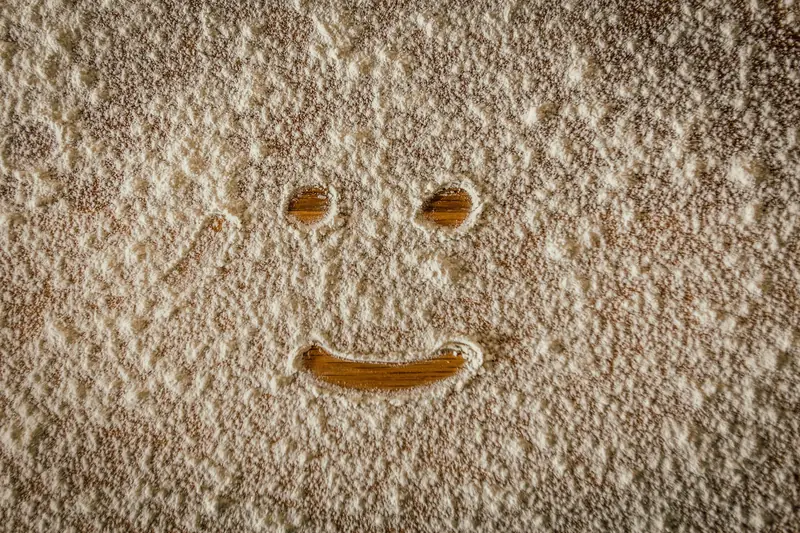
Bran for the Gut and Weight Loss
The phenomenon of plant fibers lies in their difficult digestion and quick satiation, allowing you to trick your hunger for a long time. If you find it hard to go without snacks, replace unhealthy “fast” food with bran and a glass of kefir. In 100 grams of bran, there are only 150-200 calories: more than in raw carrots, but significantly less than in a sandwich with sausage.
Dietary fibers improve gut microbiota and combat dysbiosis. Therefore, constipation, bile stagnation, gallbladder diseases, atony, and intestinal dyskinesia are indications for consuming bran, which not only improves metabolism and promotes bowel movements but also regulates the function of other digestive organs.
Rye and barley bran have proven abilities to eliminate harmful cholesterol, microbes, and toxic salts from the intestines. The ability of dietary fibers to absorb toxins and remove them from the body naturally combats intoxication caused by chronic constipation (constipation lasting more than two days).
The most common causes of constipation include insufficient fluid intake, sedentary lifestyle, stress, and a lack of dietary fiber. Among foods, bran holds the top position for fiber content: 55% compared to 20% in vegetables. The absorption of water in the intestines by plant fibers increases the volume of waste and reduces the risk of constipation, stimulating bowel activity. Consuming 22 grams of bran daily increases the frequency of bowel movements by 50%.
This is why bran is indispensable in the fight against excess weight. To determine if you have excess weight, use the body mass index (BMI) formula: divide your weight (kg) by the square of your height (m). A value above 25 indicates excess weight, while a BMI over 30 indicates obesity. These conditions require dietary adjustments, as they are associated with metabolic disorders, joint and vein diseases, and risks of brain and cardiovascular catastrophes (ischemia, heart attack, and stroke).
Interesting Facts About Bran
In the Middle Ages, constipation was considered a “royal disease” because it primarily affected the nobility. The common people were largely unaware of such issues, as they consumed coarse food and engaged in physical labor. Today, chronic constipation affects 10-15% of young people and 20-30% of the elderly in developed countries. Unlike residents of the U.S. and Western Europe, Indians and Africans are largely unfamiliar with constipation: in Africa and Indochina, the statistics for this intestinal disorder are nearly zero.
However, among Asian peoples, particularly the elite, there was a different experience. In the 17th century, affluent citizens of India, China, Indonesia, and the Japanese islands appreciated the taste of polished rice and, to their detriment, rejected unrefined products in its favor. The consequences were catastrophic: people suffered painful deaths marked by loss of sensitivity, paralysis, and mental disturbances (delirium and hallucinations). Contemporary physicians recognized these symptoms as a new epidemic and named the mysterious ailment beri-beri (which translates from Sinhalese as “weakness”). It wasn’t until 200 years later that Dutch researcher Christiaan Eijkman identified the true cause of the disease: a deficiency of thiamine, or the vital vitamin B1, found in the outer layer of unrefined rice grains.
How to Consume Bran?
The main rule is to consume this product alongside liquids: kefir or yogurt, compote or tea, juice or water. The recommended daily dose is up to 30 grams, or about 2 tablespoons.
For detoxification, bran should be consumed half an hour before meals (in the morning on an empty stomach), washed down with 1 tablespoon and two glasses of water. In the evening, a tablespoon of bran should be taken with a glass of kefir.
The combination with kefir forms the basis of various low-calorie diets and is a proven regimen for a detox day. Start with a minimal dosage (1 tablespoon of dry bran is sufficient for a glass of kefir) and gradually increase this amount, drinking 2 liters of pure water daily. The daily dose should not exceed 4 tablespoons.
After draining the water from bran soaked in boiling water for half an hour, the mixture can be added to kefir, soup, salad, etc., or combined with flour used for baking.
If you suffer from gastroduodenitis, gastritis, or cholecystitis, your doctor will likely advise against consuming bran. Be sure to consult a specialist.
Bran: How to Prepare?
Here are some recipes for healthy dishes for busy cooks.
Bran in Milk
Pour milk into a pot and place it over low heat. Without bringing it to a boil, add the bran to the hot milk. Stirring, bring to a boil and cook for about two minutes. Remove from heat and let it steep for a few minutes (five minutes is sufficient) before adding it to soup or any porridge.
Bran Pancakes
This is a weight-loss dish. For five pancakes, you will need 4 tablespoons of ground bran (which will replace flour), 100 ml of low-fat milk (1.5%), 1 chicken egg or 2 quail eggs, 1 tablespoon of refined oil, and a pinch of baking soda or baking powder. Salt and sugar are not included in healthy recipes (it’s better to serve honey on the side), but these ingredients can be added if desired.
Mix the bran with the milk, add the eggs, sunflower oil, and baking soda. Pour the batter onto a well-heated thick-bottomed skillet.
Bran Bread
For 600 grams of flour, take 80 grams of wheat, rye, or oat bran, 430 ml of water, 2 teaspoons of “quick” yeast, salt and sugar to taste, 2 tablespoons of butter, and dry milk.
After sifting the flour, mix it with the other ingredients. Dissolve the yeast in warm water in a separate bowl, mix, and pour into the dry components. Knead the dough, adding softened butter. Let it rise in a warm place for two hours, shape the bread, and let it rest again. Bake in the oven at 180°C until done.
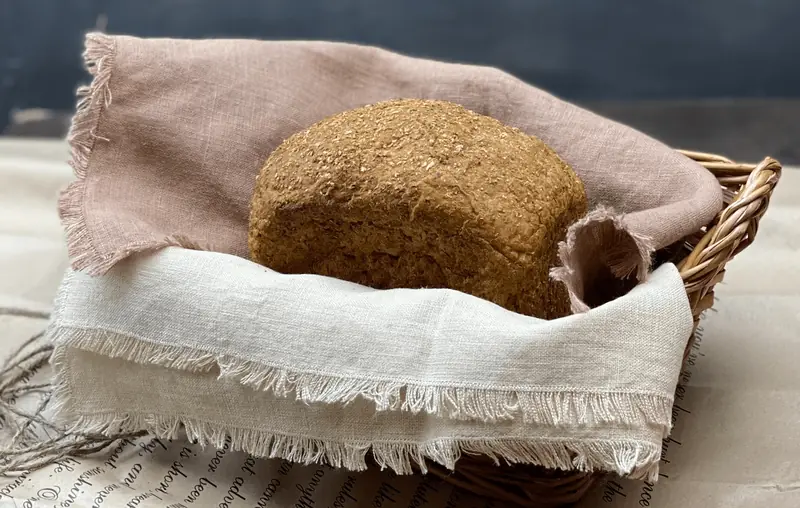
Lean Bran Dumplings
For the dough, you will need 400 grams of flour, 250 ml of water, 2 tablespoons of bran, and 1 teaspoon of salt.
For the filling, take three radishes, a carrot, half a bunch of dill, and pepper and salt to taste.
To prepare the dough: mix the bran with sifted flour and salt in cold water. This is convenient to do with a mixer. You can also knead the dough by hand until it reaches an elastic state. Place the dough in a bowl greased with vegetable oil, cover with plastic wrap, and refrigerate for a few hours to make it easier to roll out later.
For the filling, clean and finely grate the radish and carrot, add chopped dill, and season with salt and pepper. Drain the excess juice from the vegetables into a separate container; it will be useful for the sauce.
Roll out the dough, cut out circles, and place the vegetable filling in the center. Seal the dumplings and place them on a floured board, then freeze for an hour (this prevents them from falling apart in boiling water). Cook the dumplings in salted boiling water, reduce the heat, and boil for about five minutes after they float to the surface.
For the sauce, mix the vegetable juice with 3 tablespoons of yogurt or sour cream. Season with salt, pepper, and add herbs, along with 1 teaspoon each of mustard and lemon juice.
Cabbage Pie with Chicken and Bran
For the dough, you will need 200 ml of kefir, 170 grams of flour, 10 grams of wheat or oat bran, 2 chicken eggs, 50 ml of corn oil or 1.5 tablespoons of refined sunflower oil, 1 teaspoon each of sugar and baking soda, a pinch of salt, and 1 tablespoon of sesame seeds.
For the filling, you will need 150 grams of boiled chicken fillet, 250 grams of young white cabbage, herbs, and salt to taste.
Finely shred the young cabbage and knead it with your hands. Chop the boiled fillet into cubes. Add chopped parsley and dill, and season with salt.
Mix the beaten eggs with kefir and the other ingredients. In a separate bowl, combine sifted flour and bran. Mix the dry and wet components together until you achieve a uniform consistency similar to not-too-thick sour cream.
Line a baking dish with parchment paper, greasing the bottom and sides with oil. Gradually layer the filling, leaving some space from the edge. Pour the remaining batter on top and smooth it out with a spatula. Sprinkle sesame seeds on top for a beautiful and healthy finish. Bake for 30 minutes in a preheated oven at 180°C.
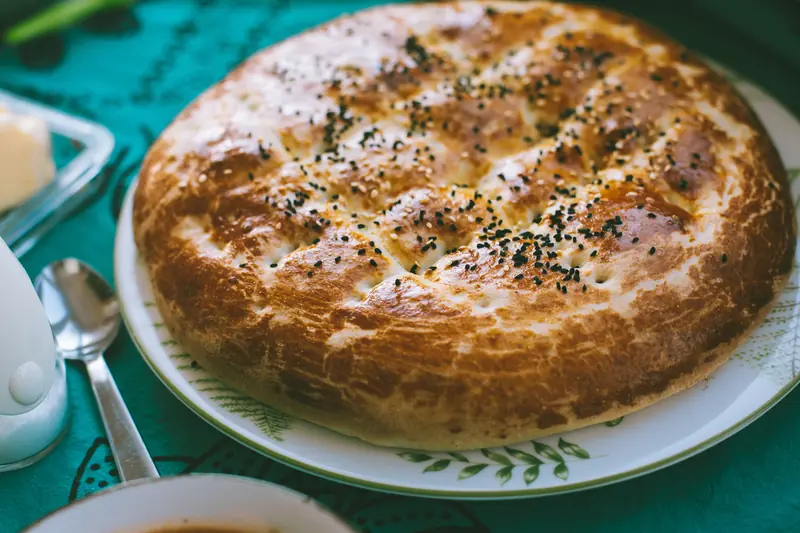
Chocolate Bran Cake
For four servings, you will need: 5 tablespoons of any loose bran, ½ teaspoon of baking powder, 100 ml of whey or another fermented dairy product, 1 chicken egg or egg white, 2 tablespoons of cocoa powder (one for the batter, the other for the glaze), and 3 tablespoons of low-calorie jam (1 tablespoon for the batter and 2 tablespoons for the glaze).
Mix all the ingredients together and knead the batter with a fork directly in the heatproof dish, which you will place in the oven for 20 minutes at 180°C.
Prepare the glaze in a separate bowl with the jam (heat it before adding cocoa). Mix and spread it while hot over the cake taken out of the oven.
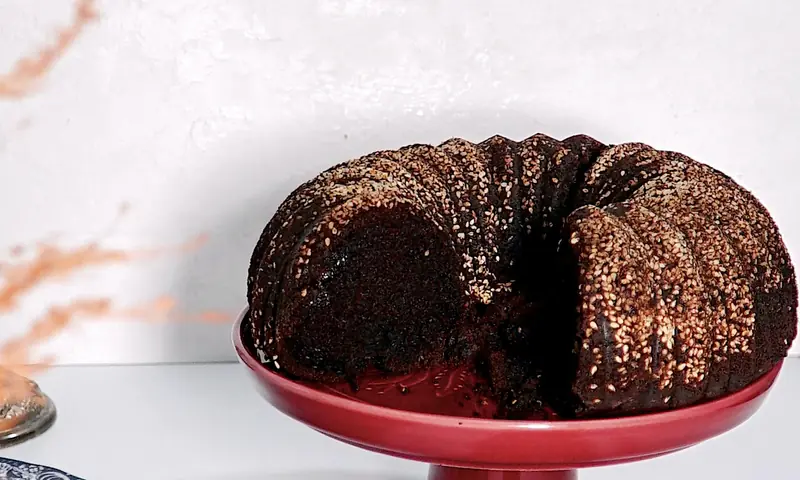
Make sure that healthy food can be delicious!
